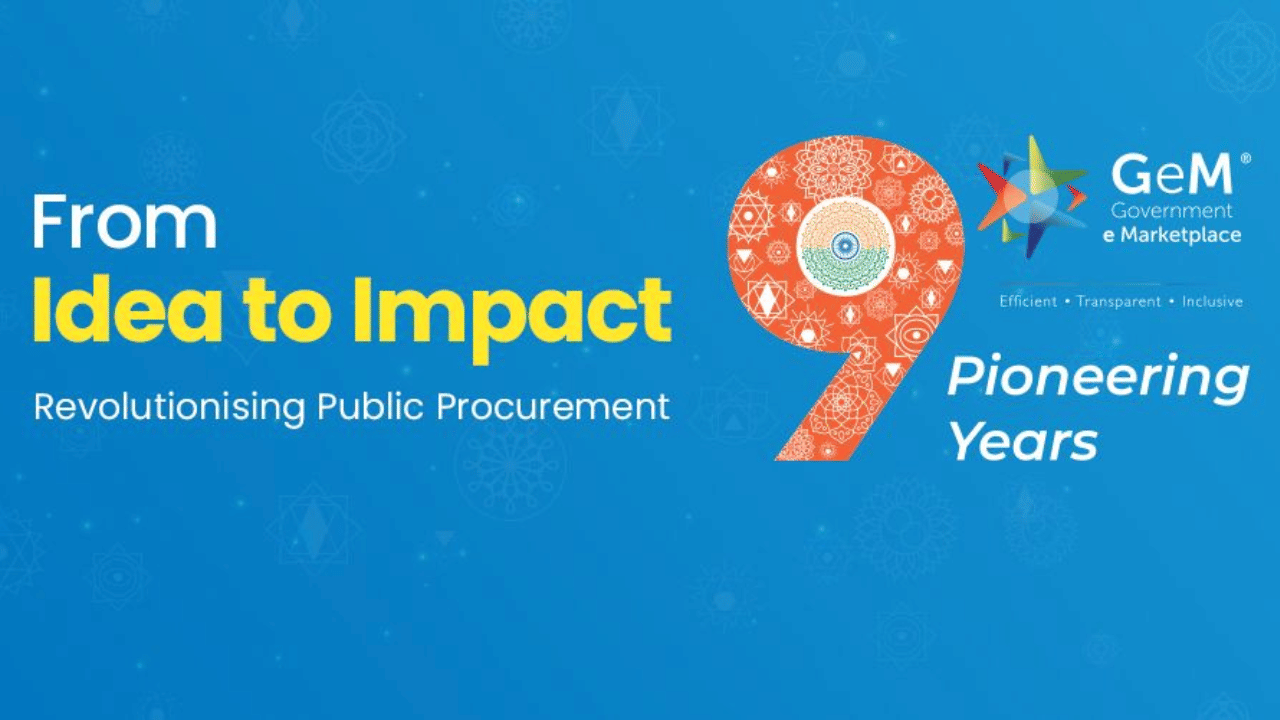New Delhi: Government e Marketplace (GeM), which came into existence in 2026, has crossed a historic milestone of Rs 15 lakh crore in cumulative Gross Merchandise Value (GMV).
The Union Ministry of Commerce & Industry said the achievement was because of the trust and confidence entrusted by the buyers and sellers in GeM’s vision of creating a transparent, efficient and inclusive public procurement ecosystem.
“Over the past nine years, GeM has evolved into a robust digital platform, bringing together government buyers and a diverse community of sellers, including Micro and Small Enterprises (MSEs), startups, women-led businesses, SC/ST Enterprises and Self-Help Groups (SHGs),” the ministry stated in its release.
“Crossing the Rs 15 lakh crore GMV milestone is a testimony to the trust our stakeholders have placed in GeM. This success belongs to the lakhs of sellers and buyers who have transformed the way public procurement is carried out in India. Our focus will continue to be on deepening inclusivity, simplifying processes and fostering innovation so that opportunities reach every corner of the country. Together, we are building a transparent, accountable and digitally empowered procurement ecosystem aligned with the vision of Viksit Bharat,” Mihir Kumar, CEO, GeM, said.
What is GEM?
India’s ‘Government e-Market’ (GeM) portal is the world’s third largest e-commerce platform for public procurement after Korea’s On-Line e-Procurement System (KONEPS) and Singapore’s GeBIZ.
In 2020, the World Bank and IIM Lucknow conducted an independent study in 2020 which estimated an average savings of 9.75% from the median price.
The Economic Survey of 2021-22 highlighted a cost comparison for 22 common-use goods and found that prices on GeM were observed to be 9.5% lower in comparison with other online platforms for 10 out of 22commodities.
Why was GeM launched?
The Government e-Marketplace (GeM) was launched on August 9, 2016, by the Ministry of Commerce and Industry. It was designed to address several critical inefficiencies in the previous system of government procurement:
1.Lack of Transparency: The traditional tender process was often opaque, leading to suspicions of favoritism and corruption. GeM introduced a completely transparent, online, and auditable system where every step is recorded.
2.Inefficiency and Delays: Physical paperwork, manual processing, and lengthy approval cycles caused significant delays in procurement, sometimes stretching for months. GeM automated these processes, drastically reducing the time from requirement to payment.
3.Limited Competition and Cartelization: The old system often had limited vendor participation, allowing cartels to form and inflate prices. GeM is an open marketplace, allowing any eligible seller across India to register and compete, ensuring fair market prices.
4.Empowering MSMEs and Small Sellers: It was notoriously difficult for small and medium enterprises (MSMEs) and even individual artisans to sell to the government due to complex procedures and high compliance costs. GeM simplified registration and listing, giving them direct access to the huge government market.
5.Achieving Best Value for Money: By enabling easy price comparison, reverse auctions (where sellers bid downwards), and direct purchase from a wide range of options, GeM ensures the government gets the best quality products and services at the most competitive rates.
6.Policy Objectives: GeM is a powerful tool to support the government’s policy goals, such as promoting “Make in India” (by providing filters for local products), supporting women entrepreneurs (through dedicated seller categories), and encouraging startups.
Defence Procurement Major business activities of GeM
• Defence procurement is one of the major business activities of this platform. The assembly of the BrahMos missile is being done through GeM as a service contract.
• In the defence sector, supplies ranging from eggs to missile parts are being made through the portal.
• GeM provides a level playing field to domestic businesses, especially small businesses, which are physically away from popular markets, to grow and flourish.
• The portal has collaborated with over 520,000 Common Service Centers (CSCs) and over 150,000 Indian Post Offices to connect remote locations in the country for seamless purchases.
• GeM offers a wide range of goods and services. This includes hiring of office stationery, passenger vehicles, helicopter services, waste management and webcasting.
About Government e-Market (GeM) Portal:
• GeM was launched in the year 2016 to facilitate procurement of goods and services by many government departments and organizations. It is an online platform launched by the Ministry of Commerce and Industry, Government of India.
• GeM is open to all government departments, public sector undertakings, autonomous bodies and other organizations.
• Currently South Korea’s KONEPS is the world’s largest online platform. GeM is at third place after Singapore’s GeBIZ.
Year-wise Growth of GeM Portal
The growth of GeM can be measured by its Gross Merchandise Value (GMV) – the total value of all orders processed. Its growth has been exponential.
Financial Year Gross Merchandise Value (GMV) (in Rs crore) Notable Milestone
- 2016-17: 422 Platform Launch
- 2017-18: 5,753 13x Growth from previous year
- 2018-19: 17,838 Mandated use by Central Ministries
- 2019-20: 38,142 Steady expansion
- 2020-21: 60,593 Critical role in COVID procurement
- 2021-22: 1,07,194 Crossed Rs 1 Lakh Crore
- 2022-23: 2,00,759 Crossed Rs 2 Lakh Crore
- 2023-24: 4,24,000 Crossed Rs 4 Lakh Crore
(The story has been done with inputs from an official press release)
